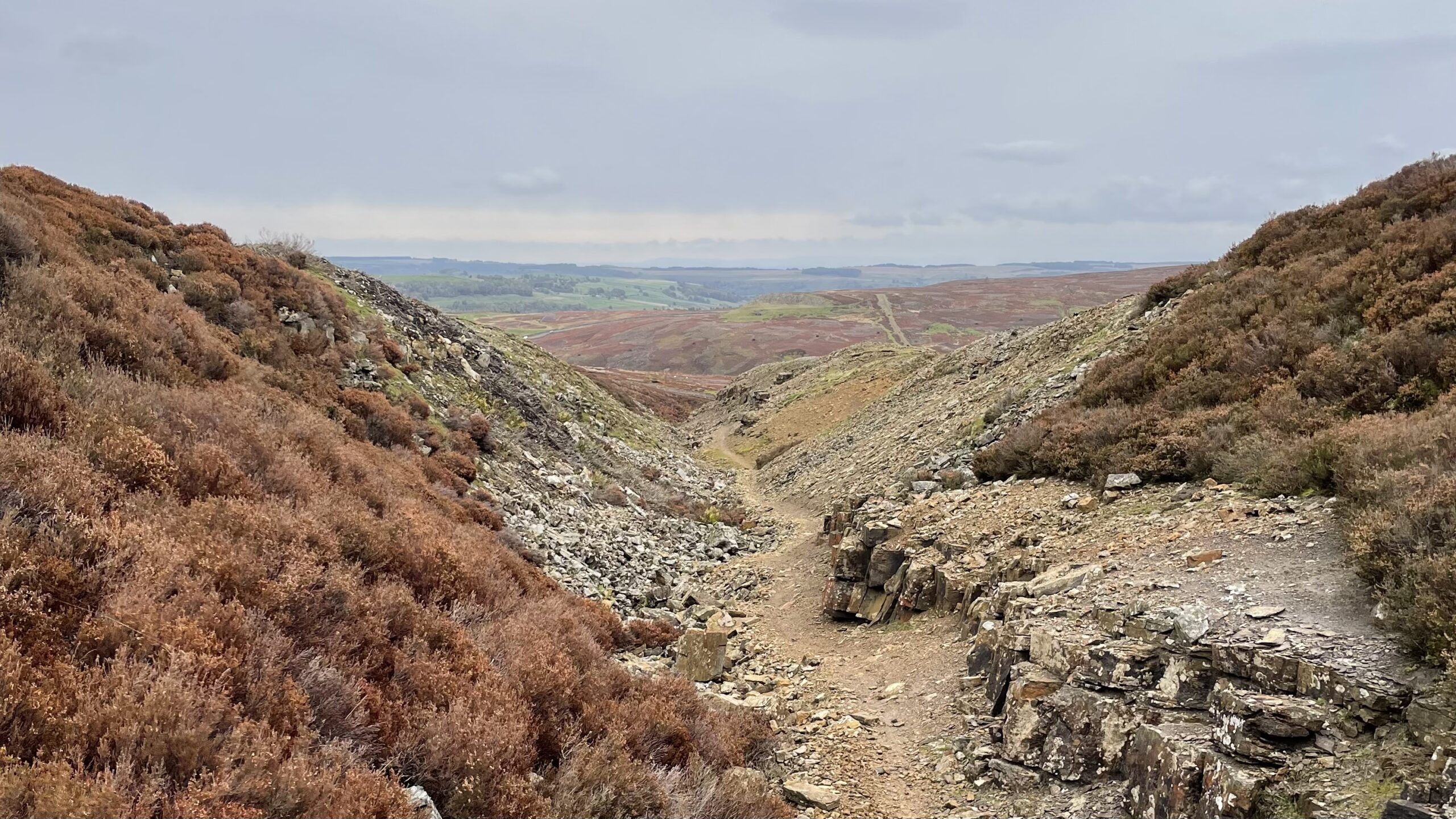Another glimpse from Thursday’s wander through Swaledale: this is How Hush, a scar across the hills carved not by nature but by centuries of lead mining.
Lead was likely valued here long before history began to take notes. The vast Grinton–Fremington dykes, which probably marked prehistoric tribal boundaries, bear silent witness to early human presence in the valley, though there is no evidence that the folk were aware of the riches beneath their feet. No written trace of mining appears until the Normans, and even then, evidence is as elusive as the ore itself. Two Roman lead ingots, supposedly cast in Swaledale, were once reported—one melted down, the other lost somewhere between rumour and the British Museum’s archives1Lead Ingots | Swaledale and Arkengarthdale Archaeology Group (SWAAG). https://new-swaag.org/lead-ingots/. The Romans, pragmatic as ever, probably scraped what they could from the exposed veins and moved on.
Hushing, the method that gave How Hush its name, was both ingenious and brutal. Miners dammed streams high above the slopes, letting rainwater build into temporary lakes. At the right moment, they broke the barriers, unleashing torrents that tore away soil and rock to expose the veins beneath. The same water that scoured the hillside might, if they were lucky, reveal a fortune in lead2LEAD MINING IN THE YORKSHIRE DALES BY JOHN MORRISON. Page 15. Dalesman Publishing Company. 1998..
Each success invited another hushing, gouging deeper into the valley and leaving a raw, barren gully in its wake. Even now, the slopes bear those wounds—stark, stony channels where grass still hesitates to return. What began as a clever way to find ore has endured as a reminder of human persistence, and the quiet ruin it so often leaves behind.
- 1Lead Ingots | Swaledale and Arkengarthdale Archaeology Group (SWAAG). https://new-swaag.org/lead-ingots/
- 2LEAD MINING IN THE YORKSHIRE DALES BY JOHN MORRISON. Page 15. Dalesman Publishing Company. 1998.

Leave a Reply